The best comics of 2020
Peter Breedveld

Illustratie: Edward D’Ancona
Somehow, although I theoretically had more time for myself because of the lockdown, what with not having to commute and spend time with other people because, hey, Covid you know, somehow I haven’t read nearly as much as in other years and I haven’t quite figured out yet why that is. I couldn’t find the time nor the ease of mind to sit down and fully concentrate on a book for a couple of hours. Very strange.
But I did read and I’m sorry to say not everything I found as good and entertaining. I made some terrible choices. I read about a Belgian graphic novel everybody was raving about, Aaron by Ben Gijsemans, and it was the most excruciating experience of the year and I sat through the whole series of The Queen’s Gambit, so that’s saying something. I think for the first time in my life I gave up on a book halfway, I just couldn’t anymore. It was Rebecca Dautremers adaption of Of Mice and Men, more than 400 pages of tiny panels. It looked eye-poppingly beautiful so I bought it on a whim, but after 200 pages it felt like Chinese water torture.
Then there was Adrian Tomine’s new book. My expections were sky-high because his last graphic novel Killing and Dying was my favorite of 2015 and again, everybody was short on superlatives to praise this one and it was such a huge disappointment. Just a bunch of gag-strips about his experiences at comic conventions, where people mispronounced his name and didn’t recognise his genius and so on. Every story resulting in an anti-climax of some sort. In the end it became interesting when Tomine got a heart attack and things were actually happening, but by then it was too late for me. Not a bad book, but certainly not worthy of the hysterical eulogies it got.
Other books I have high expectations of I didn’t come around to reading yet, so no Joe Sacco on this list, but I will soon read it and the same goes for the new Chat du Rabbin by Joan Sfarr, another book he did about Reynard the Fox and I am still waiting for Ann Nocenti and David Aja’s book Seeds to arrive, of which I read the first two chapters so I know that’s a master-piece.
I got ten comic books I really think are highly recommendable, but I don’t think I would be able to come up with an eleventh. Here goes:
10) Katie Skelly: ‘Maids‘

I like Katie Skelly’s poppy art, colourful and simple like in a children’s book, Miffy by Dick Bruna. Only Skelly does not tell feel-good stories about cute bunnies but dark tales about blood-thirsty women. As simple and minimalistic as her art looks, so multilayered are these tales. Her My Pretty Vampire was on my list of favorites strips from 2017, Maids kicks off this year’s list. I mean last year’s list. I mean this year’s list of last year’s best strips.
Maids is based on a true story, or so the text on the back of this book tells me. A famous murder case in France in the thirties. Two inseparable sisters, put away buy their abusive mother in a convent, come to work as servants for a rich woman and her daughter. They get abused some more and you can guess what it all leads to. Power to the people and hang the rich and all that.
It’s the journey to the destination that counts. The almost erotic bond between the two sisters, the psychic dependency of one sister on the other, that twilight zone where it always becomes unclear who the victim is and who the perpetrator and whether that matters much.

9) Tsurita Kuniko: ‘The Sky Is Blue Without a Single Cloud‘

I have read some manga in my time, but not nearly as many as many people seem to think, knowing I’m something of a Japanophile and have a degree in Japanese Language and Culture. This year I decided to become a little more literate in manga and ordered some fresh translations (reading manga in Japanese takes me too long although I am currently reading Okazaki Kyoko’s work in Japanese, because translations are either hard to find or scandaously expensive).
This book is the first of three manga on this list. It is a collection of short stories by Tsurita Kuniko (1947-1985), one of the ground making female manga artists of the Japanese underground, or alternative scene.
These are not so much stories as visual philosophical essay or poems even or maybe pop-songs is more accurate, or pop ballads. Not easy to fathom but tittilating and thought-provoking. Dated, perhaps, because this is definitely about the seventies, the student movement in Japan, the cinematic New Wave, I was often reminded of Oshima Nagasa’s work.
This seems to be about people, women often, androgynous individuals trying to break free, getting caught, being imprisoned. One story, the most prosaic, is about an androgynous woman whose house is invaded by a dominant activist and his entourage. It made me think of Yoshizumi Megumi, the talented assistant of famed director Wakamatsu Koji I saw a good film about last year, Dare To Stop Us.
Not a conventional manga and Tsurita was certainly not the most gifted artist, but she knew how to stretch the limits and to make the impossible possible on a single page, experimenting with form and content to tell real stories about stuff that matters.
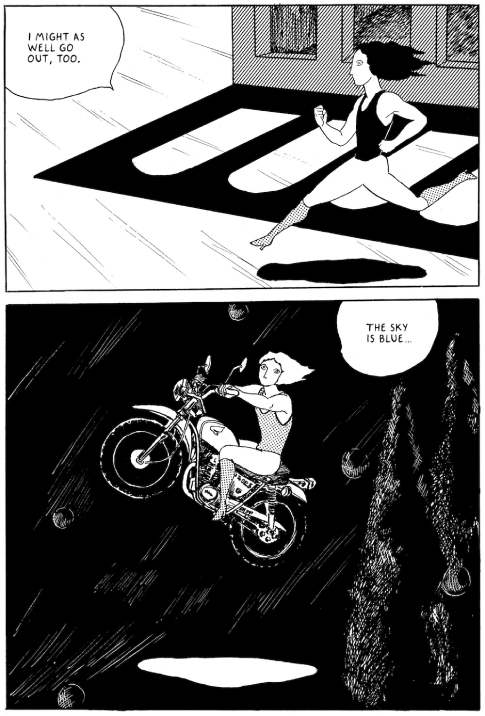
8) Lucy Sullivan: ‘Barking‘

Lucy Sullivan is an amazing artist. Her expressive drawings burst with energy, jump at you and from you. They seem to move with such pace it’s hard to keep up, it’s extremely kinetic. This book was realised by a crowd-funding project and also with some government subsidies, I believe. The title ‘Barking’ is a play with the double meaning of the word, for ‘barking’ means also ‘crazy’, or ‘mad’. In ‘Barking’ the protagonist’s psychic illness is visualised as a big black monster of a dog.
It’s based on Sullivan’s own experiences, if I understand correctly, of being committed to a mental institution. The way she underwent this is described in this visual poem which has to be undergone rather than read. It’s a dizzyingly impressive work and really very very beautiful.
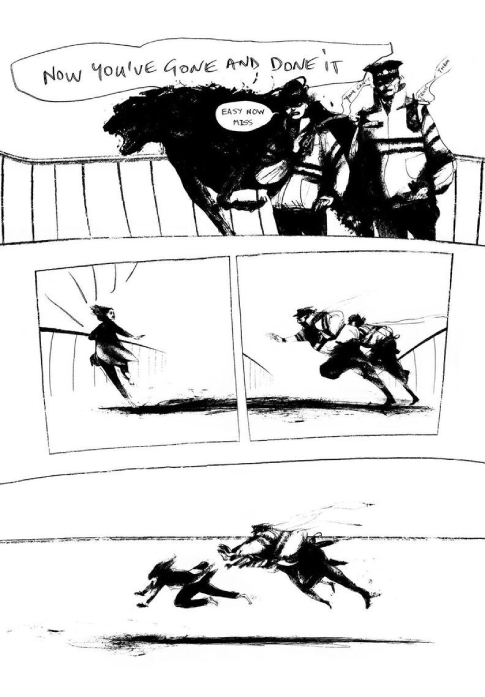
7) Tsuge Yoshiharu: ‘The Man Without Talent‘
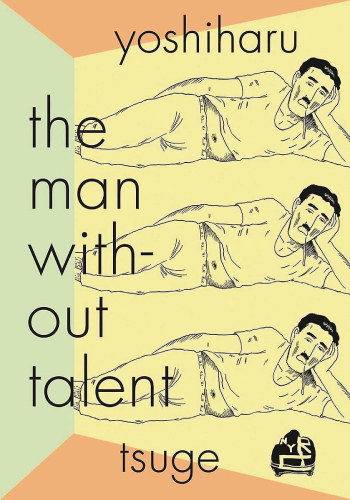
It took me a couple of pages to get into this, but I quickly became hooked to this slow, lethargic story about a deadbeat guy who goes out of his way to not have to work and still somehow provide for his wife and young son. It’s apparently autobiographical but with fictional elements and I forget if Tsuge really tried to sell stones he found near a river for some time. The protagonist in this novel, Sukegawa Sukezo, does and he lies there in his selfmade “store” all day hoping someone will buy stones they can easily pick up themselves for free a few yards away from his. After this he sells birds he has caught by himself and after that he repairs old cameras he finds in junkyards and such, to sell those for good money. He finds himself surrounded with men just like him, lazy, ambitionless and out of touch with the world around them.
Meanwhile his wife urges him to continue drawing comics, because he has made somewhat of a name with that, but he seems to consider himself above cartooning now. Recognition came only after he quit and manga-afficionados discovered how good his book was when it was only sold in second-hand stores. So they live in poverty and one can’t help admiring his wife for keeping of with his antics. In this way, this strip reminded me of Crayon Shin-Chan somewhat, where all my sympathy also goes to the poor mother being bullied by her irresponsible husband and her smart-ass, spoilt kid.
There’s no slapstick and outrageous shenanigans in The Man Without Talent however, like in Shin-Chan, but a lot of dry humour, very understated. I find it quite hilarious when people ask Sukegawa why they should buy his stones and he doesn’t really have an answer to that, or when the unattractive wife of another stone-seller tries to seduce him by purposely exposing her crotch when she squats opposite of him. This kind of awkward clumsiness, really a certain laziness to take any real effort to do anything is comical, but recognisable.
The story is multi-layered. At the end Tsuge compares himself with the eighteenth century haiku poet Inoue Seigetsu, whose ambition it apparently was to just disappear and become one with the landscape he wandered in. So The Man Without Talent seems to be an indictment against a society which forces everybody to be diligent and productive, even if they really don’t have the talent for it.
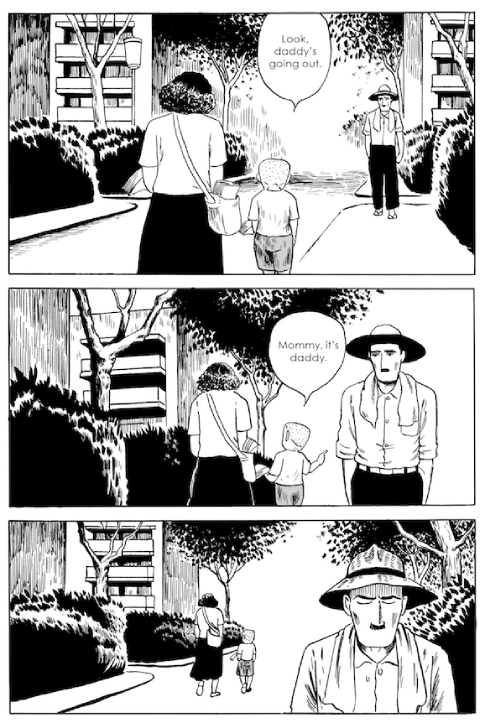
6) Dido Drachman: ‘Zwanendrifters‘

I am usally not fond of the graphic novels by alumni of the Sint Lukas Hogeschool in Brussels because they are mostly too arty for my taste (they often get much praise by international connoisseurs, so it’s entirely my fault). This debut by Dutch illustrator Dido Drachman I find very charming though, because it’s so simple and down to earth. Her drawings in water colours bulk with atmosphere and I like the way Drachman uses the space of her pages to create space. Her scenes are naturalistic and she knows how to create tension with silence.
It’s about a young girl reconstructing the story of her mother, whom she has never known, from the stories of the people around her, who are often very reluctant to talk about her. A sort of psychological detective, so to speak. Very impressive. I interviewed Drachman about her book, you can read it here, in Dutch.

5) ancco: ‘nineteen‘

When you want to know more about life in South Korea I guess you could do worse than these autobiographical stories by ancco, slices of life from her time as high-schooler at the end of the nineties, beginning of this century and later, when she was an aspiring comic artist, living with her boyfriend.
These stories, set in the outkirts of Seoul, are shockingly honest because ancco doesn’t hail from the ideal nuclear family. Her mother is a troubled woman with a drinking problem, her father hits her, everybody abuses the other. There are moments of genuine love, on the other hand, when there’s acknowledgement and appreciation of each other and those moments are touching. Ancco and her friends are tight, but they also treat each other harshly sometimes, as if they can’t afford to get too soft and too vulnerable.
Nineteen is cruel and endearing, often darkly comical. Ancco’s drawings are realistic and surreal at the same time, distorting proportions and perspective to give everything a slightly grotesque dimension, adding something dreamlike and delirious to her comics.

4) Milan Hulsing: ‘De Smokkelaar‘

Dutch comic artist Milan Hulsing used his time in lockdown wisely, writing and drawing a sequel to De Smokkelaar (‘The Smuggler’) which I purchased but haven’t read yet. This is his best work yet, an atmospheric character study of a man of doubtful morality who has fled the communist regime in his country Hungary, where an honorable but naive scientist must pay for his sins, to work for a ruthless capitalist no less evil than his former oppressors.
Hulsing (brother of animator Hisko Hulsing, known for the TV-series Undone) based this story on the Octobriana hoax and smoothly adapts his drawing style to the mood of each location his story is set in. The story is intriguing, the sequences are flowing, like in film, I love that. Hulsing is a keen observer of human nature and a wonderful artist.
My extensive review is in Dutch and you will find it here.

3) Tina Horn, Michael Dowling, Alejandra Gutiérrez and Jen Hickman: ‘SfSx: Volume 1‘

SfSx, which I guess you could read as ‘safe sex’ but also as ‘science fiction sex’ is sort of a crossing between The Handmaid’s Tale, The Matrix, Terry Gilliam’s Brazil en Frank Miller’s Sin City. It’s set in the not too distant future, when the government’s main concern seems to be a war on “abnormal” sex, from kinky to queer. There’s a constant crackdown on sex workers, who are “reformed” by torture and brainwashing, so naturally there has to be a resistance group of sex workers taking on the authorities and the law.
SfSx is well-written with believable characters of flesh and blood, natural dialogues, hard-boiled action, blood-churning torture and very, very explicit sex. Thrilling and engaging and hopefully there will be a sequence. An extended review by me you’ll find here, but it’s in Dutch.

2) Asano Inio: ‘Downfall‘

I am just blown away by this. How can someone be this good? How is it possible that he has everything exactly right? The stunning art, the hyperrealistic backgrounds, the flowing, cinematic sequences, the facial expressions, the body language, the nuances of the small gestures, the miscommunications and misunderstandings between people, the desperation and loneliness, the mood of it all, with such amazing insight?
Downfall is about an egocentric manga artist who can’t seem to get his shit together after finishing his hugely succesful manga series, to come up with a worthy successor. He separates from his wife, an editor who works in the same field, and orders a series of call-girls, one of whom he takes a liking to. There are conflicts, with his female assistant, his estranged wife, the call-girl. He finds out he’s an asshole. It’s all very dark and depressing, but one of the most beautiful graphic novels I have ever read.
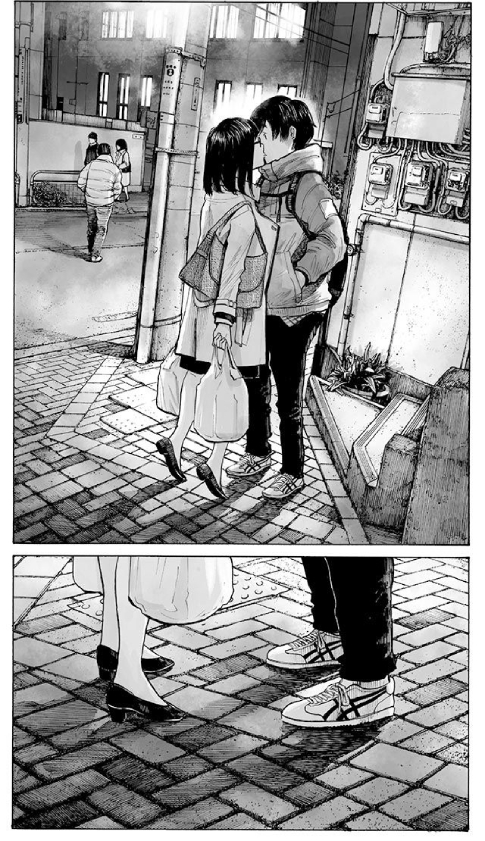
1) Simon Spurrier with Aaron Campbell, Matias Bergara, Marcio Takara and Tom Fowler: ‘Hellblazer Volume 1‘

Suddenly he was back, John Constantine A.K.A Hellblazer. I mean the real Hellblazer, not the watered down family version DC Comics had tried to make us believe, these past eight years, was John Constantine, the occultist magician who would gladly (well, after some deliberation with his own conscience, to be fair) sacrifice his best friends and even fucked Satan himself in the ass to save his own hide. Since his conception by Alan Moore in the horror comic Swamp Thing many interesting writers did many interesting things with the character. He got his own series, written by Jamie Delano and later by such illustrious authors as Garth Ennis, Warren Ellis, Peter Milligan and, my personal favorite, Paul Jenkins, who formed a great team with artist Sean Phillips (now inseparable with writer Ed Brubaker, churning out one commercially and artistically succesful pulp noir comic after the other). Then, in 2012, Constantine was killed off and returned a short time later as part of the DC superhero universe. You know, Superman and Batman and Wonder Woman and such. Bland, meaningless.
But in 2019 the original character, the ruthless, opportunistic bastard John Constantine I had come to love and cherish, returned as part of the Sandman Universe, a comic line featuring characters from the world of Neil Gaiman’s famed creation The Sandman, soon to be a television series, I believe, and damn, it was glorious. Writer Simon Spurrier, whose work I was unfamiliar with, got Constantine exactly right. It began with the series Books of Magic, followed by a one-shot comic and then continued in his own regular series.
Then, after 12 glorious issues, Covid struck and the comic industry was hit hard immediately. DC Comics decided to fire staff and cancel many series, Hellblazer among them.
A terrible thing, a goddamn crying shame, but at least we have these twelve issues and the specials preceding them. The specials and the first six issues are now collected in a trade paperback and the rest will be collected in a volume coming out in, I believe, February. I must confess I didn’t read the collected volume but I read the separate comics and they truly are the best thing I read this year, comic-wise. Real page-turners, thrilling, horrifying, really genuinely funny and totally absorbing. The power of John Constantine is this: the horror is always intertwined with the social reality of London today. So you’ll see Constantine dealing with criminals, gangs, poverty, racism, social injustice and trauma. It’s very much Ken Loach meets William Blake meets Lock, Stock and Two Smoking Barrels. I never liked it when writers would take Constantine to the US to deal with some red-neck organisation. Hellblazer belongs in London.
The art in these six issues, first by Aaron Campbell and then Italian Matías Bergara, both with colours by Jordie Bellaire, is magnificent. Exactly the right art for the right story line, Bergara’s playful lightness contrasting with Campbells dark and gritty drawing style, setting the precise right mood.
A wonderful book which I can’t recommend enthusiastically enough.
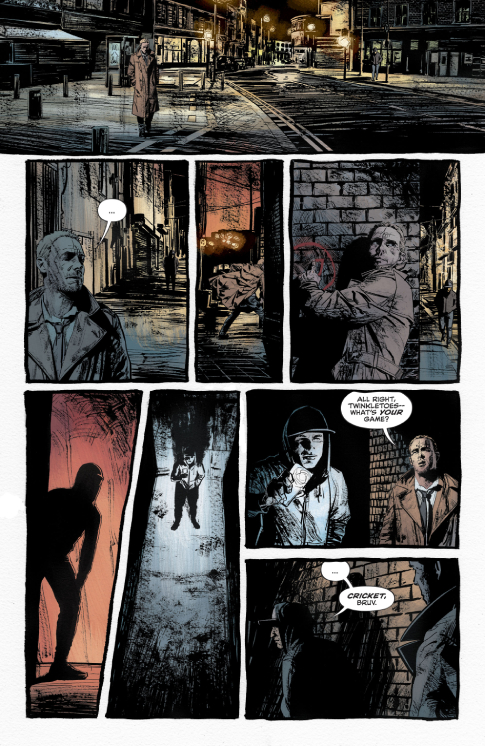
Lists, Literatuur, Peter Breedveld, Strips, 01.01.2021 @ 17:29




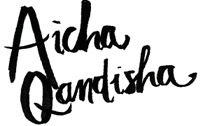

 RSS
RSS